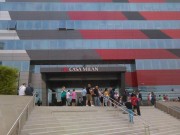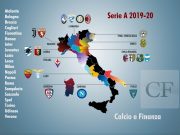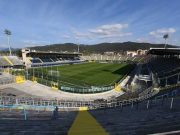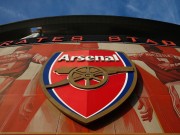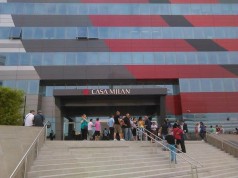In the period between 2008 and 2015, Juventus generated twice as much revenue as Napoli. Juventus’ average revenue per year comes to €230 million compared to €120 million generated by Napoli, excluding non-recurring items (capital gains).
The recurrent revenue breakdown stands out the most, considering the copious investments in the stadium project. However, paradoxically, TV rights have a bigger impact for Juventus than stadium income, which makes up 11% of the total compared to 13% for Napoli.

The differences between the two business models are also visible in the two teams’ organizational structure management and technical strategy.

Juventus vs Napoli: Human resources
While Juventus employed 155 workers, Napoli only had a staff of 36 people. It is not only the numerical factor but also the average cost of the Technical Division that needs to be taken into account: from 2008-2015, Juventus spent about twice what Napoli spent.

In summary, Juventus targeted more mature players who also had a higher impact on the balance sheet. According to CAPEX to OPEX logic, Napoli instead aimed more towards potential younger stars. Even though Napoli have a different organizational structure, previous data shows that the club still recorded the same capital gains as Juventus.
The most interesting element is how well Napoli manage their earnings before interest, tax, depreciation and amortization (EBITDA). Despite generating half the revenue of that brought in by Juventus, Napoli were able to record €130 million more than Juventus in EBITDA. In fact, looking at the timeframe in question, Napoli recorded €438 million in EBITDA compared to the €295 million posted by Juventus. In percentage terms, Napoli’s gross operating income reached 34% against 8.7% for Juventus.

Juventus vs Napoli: Investments

In terms of investments, Napoli invested around €340 million on players, not far from the €440 million spent by Juventus, while obtaining the same capital gains.
Juventus also spent €190 million on “other investments” (primarily the new stadium) without getting returns in real terms.
Juventus vs Napoli: Debt
All these investments have obviously had a significant financial impact on the two clubs. Juventus’ debt has increased consistently since 2011, and is now almost four times the value of the club’s equity.

On the other hand, Napoli started with almost zero debt in 2008 but reached a point in 2015 where equity prevails significantly over the club’s debt.
Juventus vs Napoli: Conclusion
The economic and financial comparison between Juventus and Napoli during the period 2008-2015 suggests two things:
- Despite the appeal and viability of Juventus’ investment in facilities (for instance on the stadium), this did not create valuable financial returns. In fact, Juventus’ financial performance deteriorated after 2011, meaning that increased revenue did not boost operating margins or rates of return on the investment.
- Despite huge investments in human capital (staff), Juventus’ business model has not changed significantly compared to Napoli, as shown in the revenue breakdown above. This suggests that Italian football is focused more on virtual stadiums (TV) as well as its limitations on the domestic market.
All in all, this analysis shows that the size of a club’s revenue does not necessarily equate to financial efficiency. Napoli, in fact, were able to generate €140 million more (in EBITDA) despite having only half of Juventus’ total revenue.



